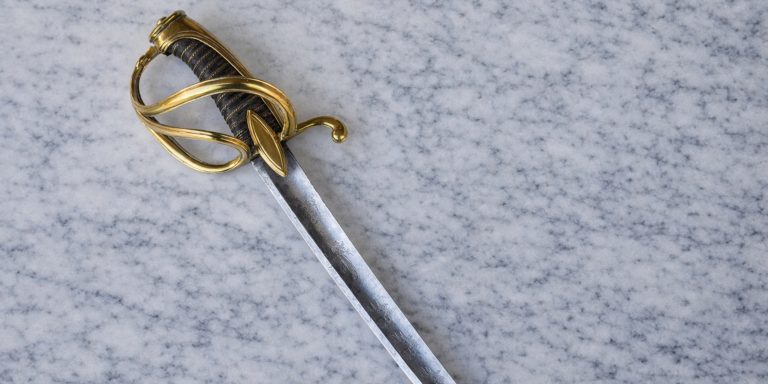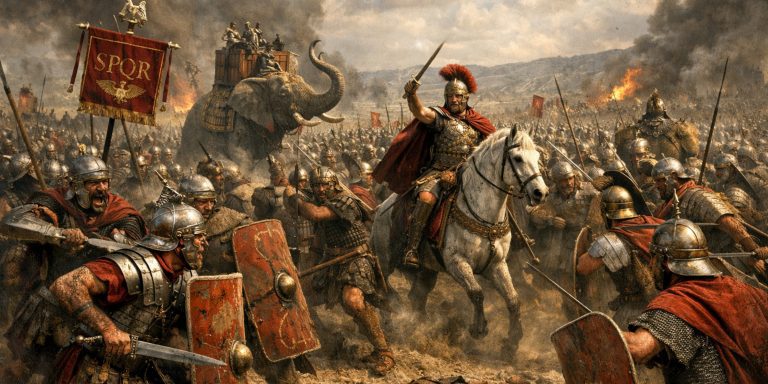
The Bronze Jian is one of the earliest known forms of the Chinese double-edged straight sword, a weapon that would eventually become synonymous with the scholar-warrior ideal. Emerging during the late Shang and Zhou dynasties, the short Bronze Jian was a refined tool of both warfare and ceremony. Despite its elegant simplicity, it reveals an impressive level of metallurgical innovation and design philosophy that shaped East Asian swordcraft for millennia.
Compact, balanced, and deadly in close quarters, the short Bronze Jian symbolised control and discipline rather than brute strength. Its design marked the beginning of a lineage that would evolve into the steel Jian of later dynasties, prized by generals, nobles, and martial artists alike.
Specifications
| Feature | Description |
|---|---|
| Origin | China |
| Era | Late Shang to Warring States period (c. 1200–400 BCE) |
| Material | Cast bronze with varying alloy compositions (tin and lead ratios) |
| Blade Length | Typically 25–45 cm (short Jian); some ceremonial examples smaller |
| Total Length | Around 40–60 cm |
| Weight | 400–800 grams depending on casting thickness |
| Edge Type | Double-edged, straight |
| Tang and Hilt | Integral tang with wood, bone, or jade grip inserts |
| Pommel | Often disk-shaped or ringed for balance and decoration |
| Decoration | Inlays of turquoise, jade, or intricate geometric casting motifs |
| Primary Use | Close combat, ritual, and as a status symbol |
History and Evolution
The short Bronze Jian emerged during a period of rapid military and technological development in early China.
1. Early Bronze Age Origins (c. 1200–900 BCE)
- Developed alongside spearheads and dagger-axes (ge).
- Used primarily by elite warriors in ritualised combat.
- The earliest examples were short, thick, and prone to bending, showing early experimentation with bronze casting.
2. Zhou Dynasty Refinement (c. 900–600 BCE)
- Metallurgical advances improved alloy strength and casting precision.
- Jian blades became slimmer, with central ridges and improved edge retention.
- Used as a personal sidearm for nobles and officers rather than rank-and-file troops.
3. Warring States Innovation (c. 475–221 BCE)
- Blade length increased slightly, signalling a transition toward the long Jian.
- Decorations became more elaborate, indicating ceremonial and symbolic roles.
- Ironworking began to replace bronze in weapon manufacture, marking the Jian’s next evolutionary step.
Advantages
- Precision and Control: The double-edged, straight blade enabled thrusting and slicing in tight formations.
- Balance: Central ridge and symmetrical design made it highly manoeuvrable.
- Durability: Well-cast bronze maintained sharpness and resisted corrosion better than early iron.
- Aesthetic Appeal: Many were crafted as works of art, not merely as tools of war.
- Symbolic Value: Represented authority and refinement, carried by aristocrats and scholars.
Disadvantages
- Brittleness: Despite advances, bronze could fracture under stress compared to later steel blades.
- Limited Penetration: Struggled against thicker armour and shields of the Warring States era.
- Short Reach: The compact blade was less effective in open combat, more suitable for duelling or ceremonial display.
- Difficult Repairs: Once damaged, bronze blades were nearly impossible to reforge or temper.
Comparison with Similar Weapons
| Weapon | Region | Period | Key Difference | Notes |
|---|---|---|---|---|
| Bronze Jian (short) | China | 1200–400 BCE | Double-edged, straight, bronze blade | Early prototype of later steel Jian |
| Ge (Dagger-axe) | China | 1600–300 BCE | Mounted blade on polearm | Preferred for battlefield reach |
| Khopesh | Egypt | 2000–1000 BCE | Curved sickle blade | More suited to slashing armourless foes |
| Xiphos | Greece | 800–300 BCE | Short, leaf-shaped bronze/iron sword | Similar reach and purpose, differing style |
| Early Iron Jian | China | 400–200 BCE | Steel blade, longer and stronger | Direct descendant improving on bronze form |
The short Bronze Jian was therefore a sophisticated intermediary, bridging the gap between early ritual weaponry and the true martial Jian of imperial China.
Legacy
- Cultural Symbolism: The Jian became known as the “Gentleman of Weapons,” a reflection of the Bronze Jian’s disciplined elegance.
- Influence on Design: Its symmetrical balance inspired later Chinese and even Japanese straight swords.
- Archaeological Insight: Finds in tombs such as those at Henan and Hubei reveal patterns of ownership, rank, and ritual use.
- Martial Tradition: Modern Wushu and Tai Chi Jian forms often trace their philosophical lineage back to these ancient blades.
The Bronze Jian represents not only technical craftsmanship but also an early moral ideal of balance and restraint in warfare.
Where to See Bronze Jian Today
| Museum | Location | Highlights |
|---|---|---|
| National Museum of China | Beijing | Extensive display of Warring States Jian and fittings |
| Hubei Provincial Museum | Wuhan | Exemplary Yue culture bronze swords with turquoise inlay |
| Henan Museum | Zhengzhou | Early Zhou and Shang Jian with detailed inscriptions |
| Shanghai Museum | Shanghai | Comparative exhibits showing transition from bronze to iron weaponry |
| British Museum | London | A small but fine collection of Chinese bronze weapons from early dynasties |
Collector’s Guide
Rarity and Authentication:
- Genuine Bronze Jian are rare and often fragmentary. Many reproductions circulate, some with artificial patina.
- Authentic pieces should exhibit even oxidation, consistent casting seams, and period-appropriate alloy composition.
Market and Value:
| Type | Typical Condition | Auction Range (GBP) | Notes |
|---|---|---|---|
| Short Bronze Jian (fragmentary) | Corroded or incomplete | £800–£2,000 | Often ex-archaeological finds |
| Intact Jian with decorations | Good patina, some inlay remaining | £3,000–£10,000 | Highly collectible |
| Museum-quality ceremonial Jian | Exceptional condition, inscription present | £15,000–£40,000+ | Rare, usually in institutional collections |
Buying Tips:
- Verify provenance documentation and laboratory metal analysis.
- Beware of artificially aged replicas made from modern alloys.
- Seek auction houses with verified Asian antiquities departments (e.g., Bonhams, Sotheby’s, Poly Auction Beijing).
- Avoid online listings without metallurgical data or origin traceability.
The Seven Swords Takeaway
The short Bronze Jian is both an artefact of early Chinese martial philosophy and a testament to advanced Bronze Age technology. Elegant yet functional, it encapsulates the cultural transition from warfare to artistry. Whether viewed in a museum display or held by a collector, its significance lies not in its size or sharpness but in what it represents: the birth of the Chinese sword tradition.



